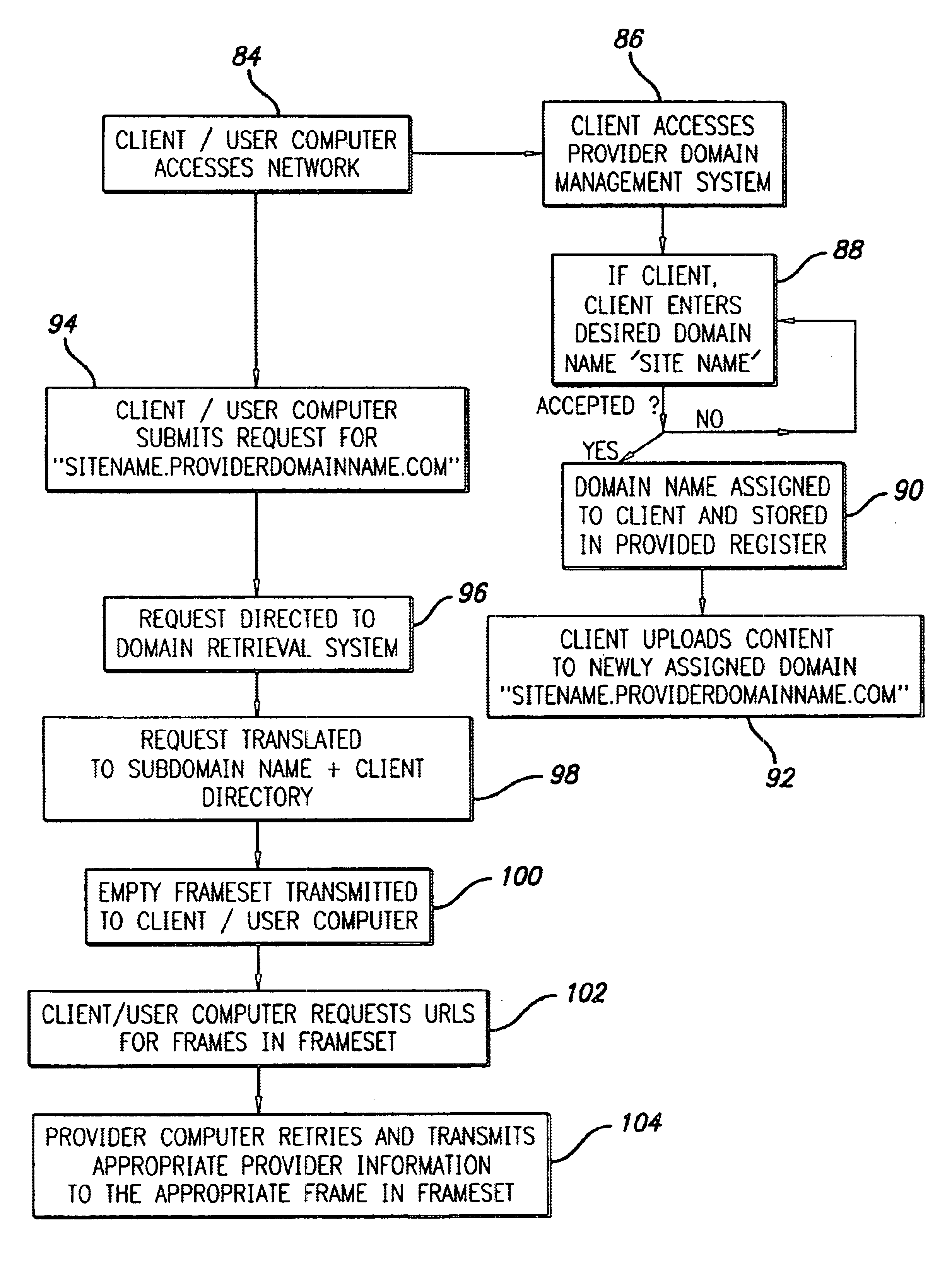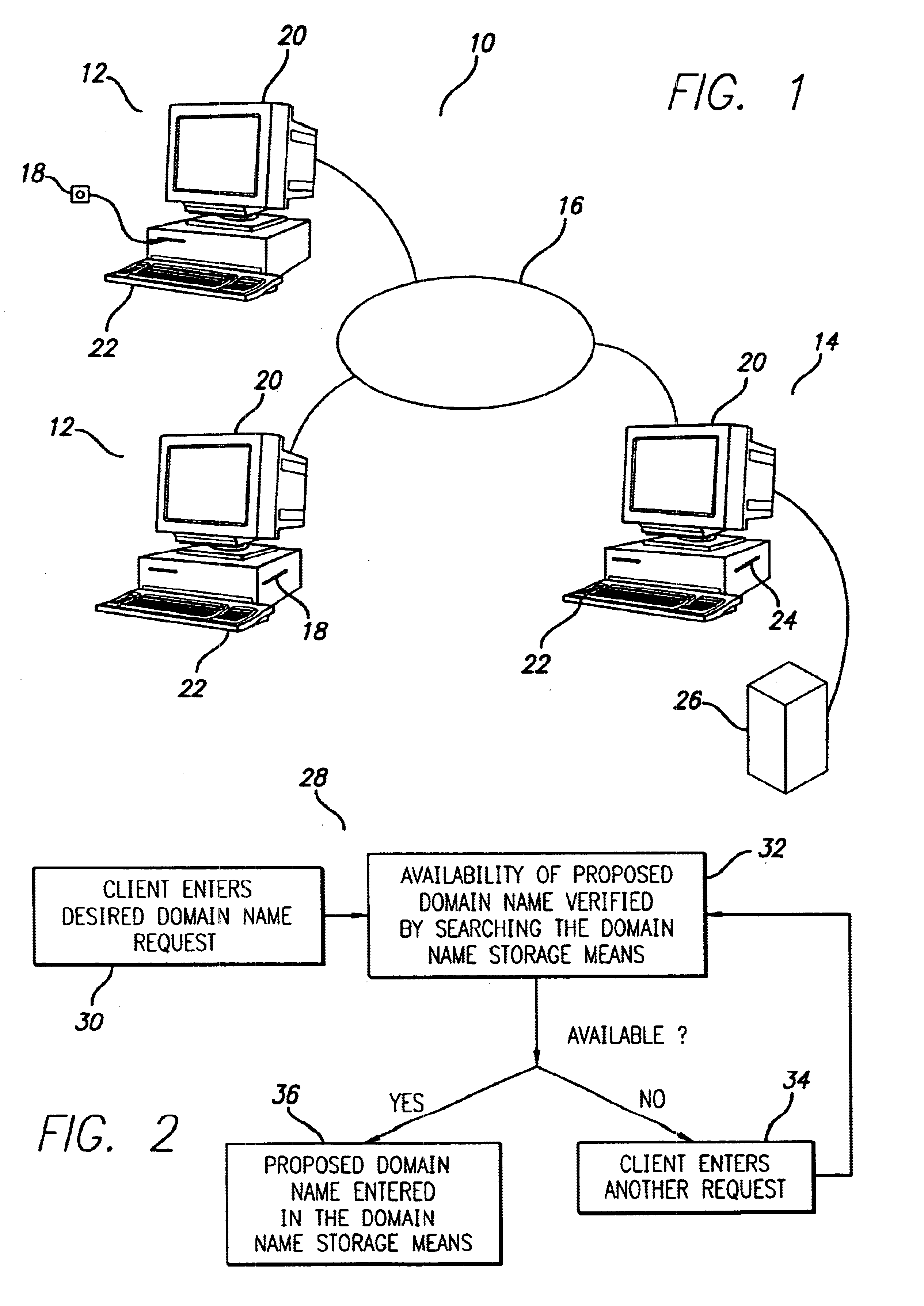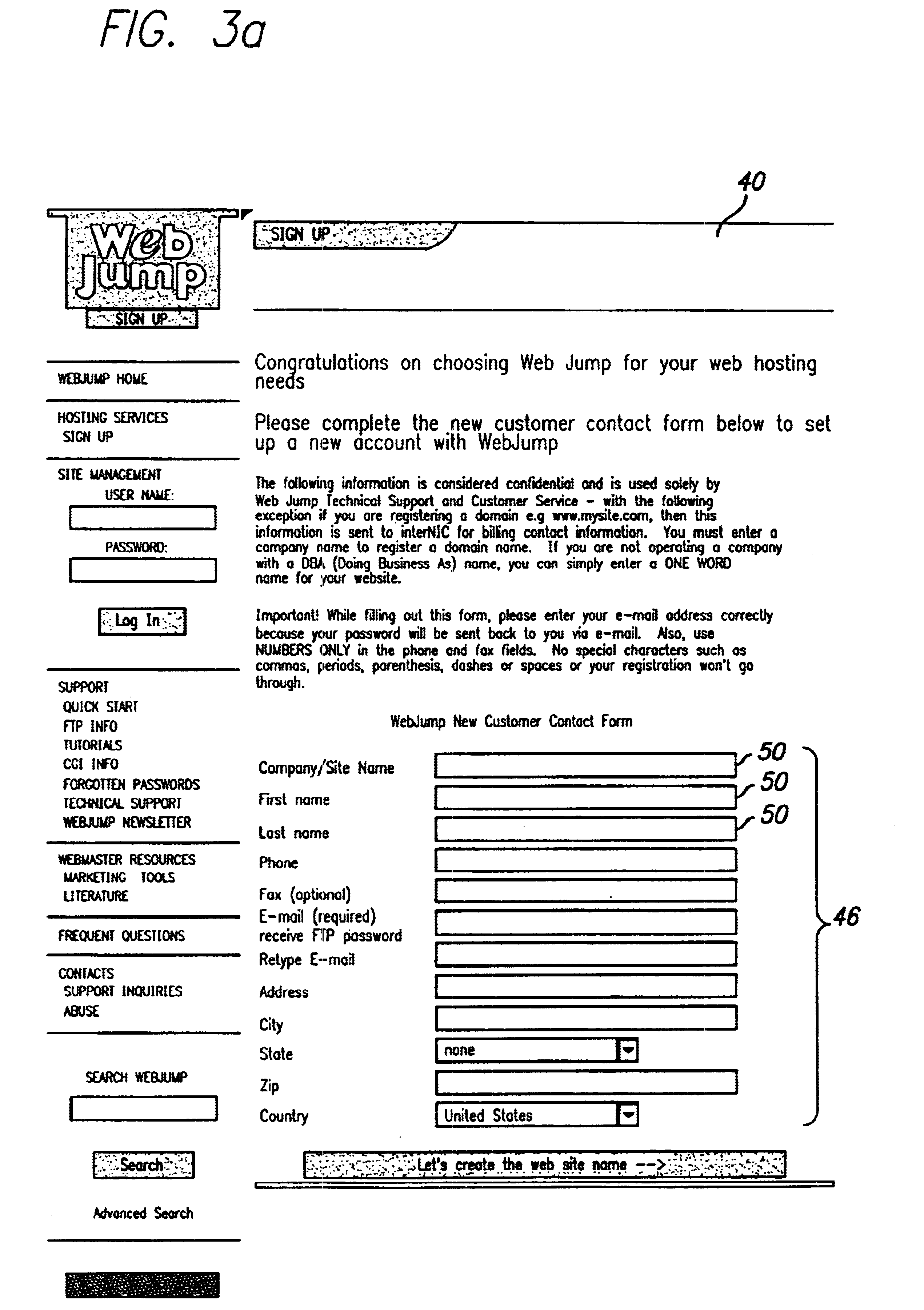System apparatus and method for hosting and assigning domain names on a wide area network
- Summary
- Abstract
- Description
- Claims
- Application Information
AI Technical Summary
Benefits of technology
Problems solved by technology
Method used
Image
Examples
Embodiment Construction
Embodiments of the instant invention are directed to a method and apparatus for hosting and assigning domain names on a wide area network. Embodiments of the instant invention employ a network of computers and programs for assigning domain names and retrieving domains on a wide area network, such as, the WWW or the Internet.
Hardware Environment
Preferred embodiments of the instant invention operate with a network comprising a plurality of networked computers, such as, for example, at least one user computer and at least one provider computer which are coupled together in a communications network, such as, for example, the Internet or WWW. FIG. 1 depicts a simplified representation of an example network system 10 that is operated in accordance with preferred embodiments of the invention.
The network system 10 includes at least two client or user computers 12 and at least one provider, or content, computer 14 coupled for communication therebetween by the remainder of the network, genera...
PUM
 Login to View More
Login to View More Abstract
Description
Claims
Application Information
 Login to View More
Login to View More - R&D
- Intellectual Property
- Life Sciences
- Materials
- Tech Scout
- Unparalleled Data Quality
- Higher Quality Content
- 60% Fewer Hallucinations
Browse by: Latest US Patents, China's latest patents, Technical Efficacy Thesaurus, Application Domain, Technology Topic, Popular Technical Reports.
© 2025 PatSnap. All rights reserved.Legal|Privacy policy|Modern Slavery Act Transparency Statement|Sitemap|About US| Contact US: help@patsnap.com



